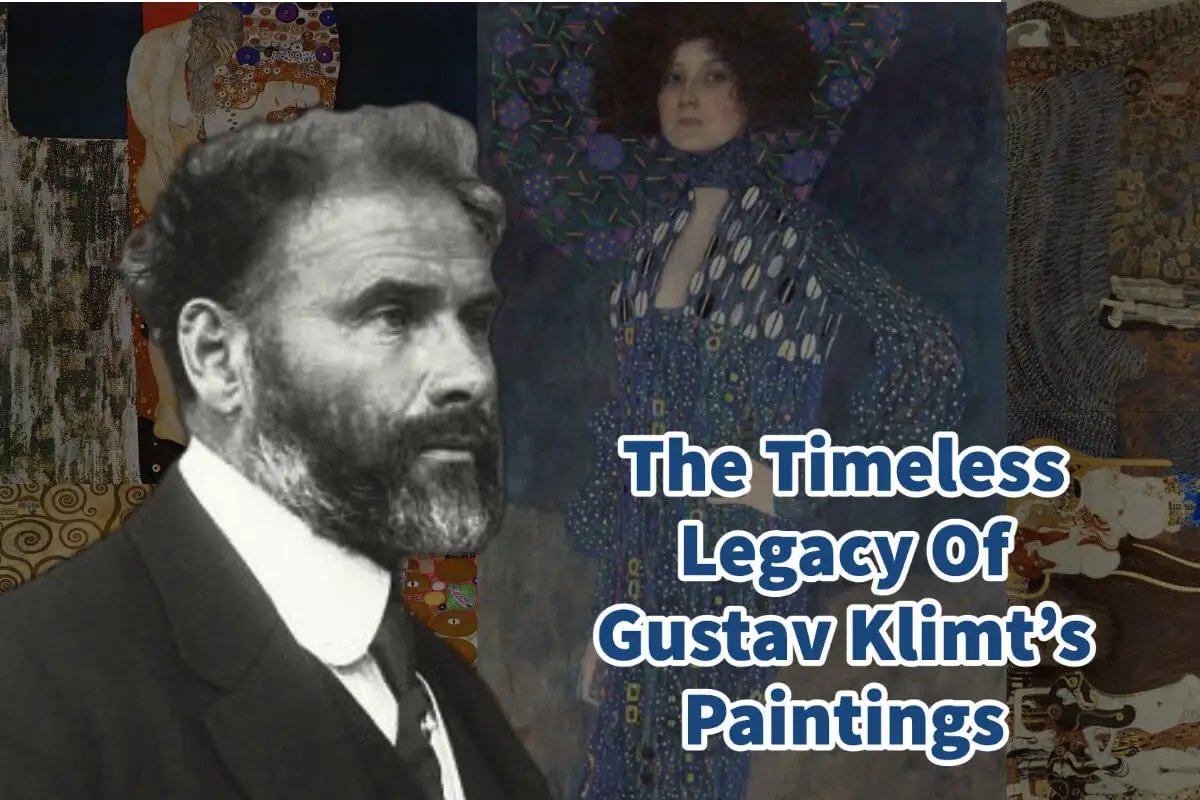Gustav Klimt is also one of my favorite artists. He has some fantastic and inspiring works of art.
Gustav Klimt was a groundbreaking Austrian artist whose work continues to captivate audiences worldwide. His bold and innovative approach to art and his use of symbolism and sensuality have made him one of the most iconic artists of the modern era. Klimt’s legacy has profoundly influenced the art world and continues to inspire artists today.
Table of Contents
- Who Is The Austrian Artist Gustav Klimt?
- Gustav Klimt’s 10 Most Important And Timeless Paintings
- Gustav Klimt’s “The Kiss” (1908)
- Gustav Klimt’s “Portrait of Adele Bloch-Bauer I” (1907)
- Gustav Klimt “Judith and the Head of Holofernes” (1901)
- Gustav Klimt “Beethoven Frieze” (1902)
- Gustav Klimt “Portrait of Emilie Flöge” (1902)
- Gustav Klimt’s “Tree of Life” (1905)
- Gustav Klimt’s “The Three Ages of Woman” (1905)
- Gustav Klimt “Water Serpents I” (1904)
- Gustav Klimt “Danaë” (1907-1908)
- Gustav Klimt “Adele Bloch-Bauer II” (1912)
- Frequently Asked Questions
- Related Questions
Who Is The Austrian Artist Gustav Klimt?
Gustav Klimt is an Austrain artist. Born in Vienna in 1862, Klimt started his artistic career as a decorative painter, creating murals and paintings for public buildings and private homes.
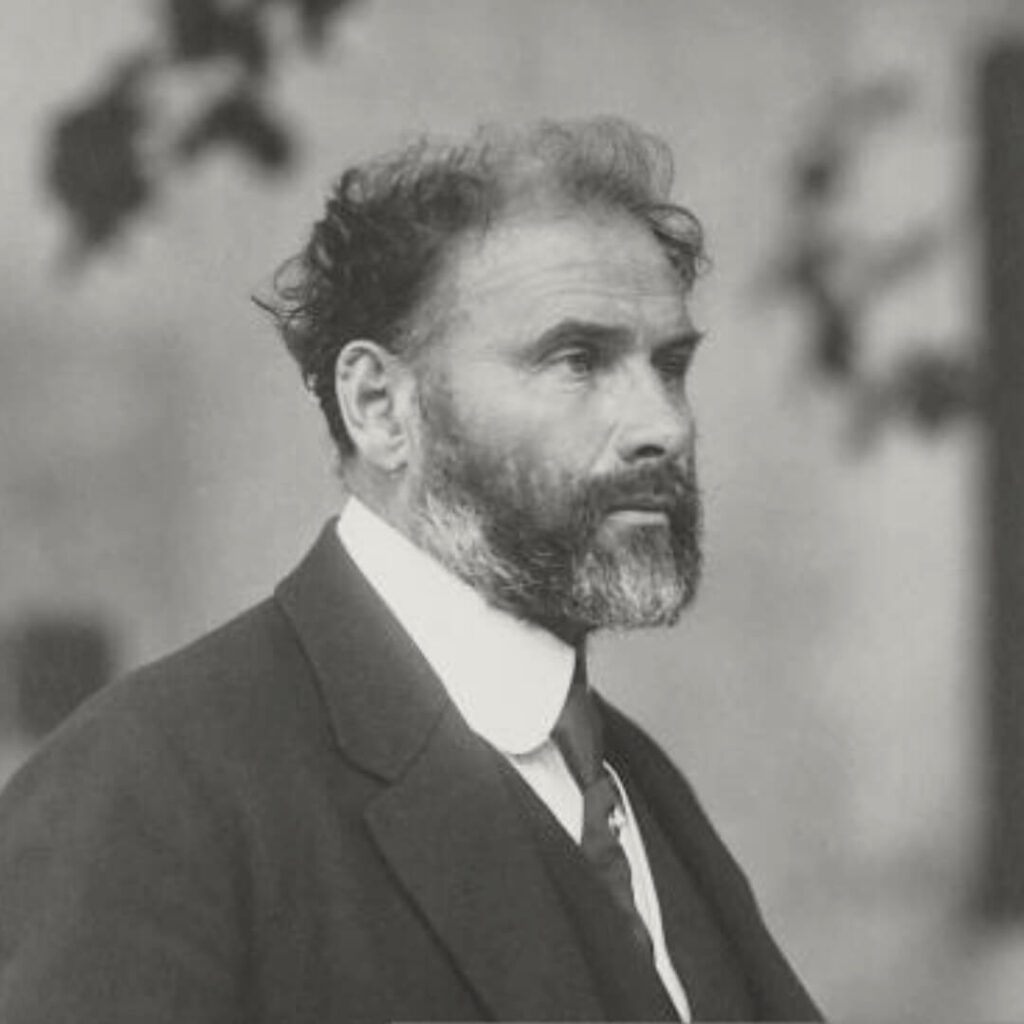
Klimt soon developed his unique style, that is characterized by a fascination with the human form and a preoccupation with the mysteries of life and death. Klimt’s paintings often depicted the female form, which he imbued with a sense of eroticism and sensuality that was groundbreaking for its time.
Klimt’s “The Kiss” Shows His Unique Style
Klimt’s most famous work, “The Kiss,” is a perfect example of his unique style. Completed in 1908, the painting depicts a couple locked in a passionate embrace, surrounded by intricate patterns and symbols. It represents Klimt’s mastery of combining traditional techniques with innovative compositions and symbolism.

Klimt’s work was not always well-received by the art and art patron establishment of his time. He was often criticized for his provocative subject matter and departure from traditional art forms. Despite this, Klimt remained committed to his artistic vision, and his work continued to gain recognition and acclaim.
Today Gustav Klimt Is A Celebrated Artist
Today, Gustav Klimt is celebrated as one of the most influential artists of the modern era. His paintings are highly sought-after by collectors and art enthusiasts alike, and his influence can be seen in the work of countless contemporary artists.
Klimt’s legacy continues to inspire and captivate audiences, as his paintings offer a timeless glimpse into his genius and profound understanding of the human experience.
Klimt’s legacy has influenced many artists during his lifetime and long after his death. Many artists have adopted his use of gold leaf and intricate patterns, and his approach to the female form has inspired countless works of art.
Klimt’s legacy can be seen in the work of artists such as Egon Schiele, Pablo Picasso, and Frida Kahlo, all influenced by his unique style and approach to art.
Klimt’s legacy also extends to the broader cultural landscape. His work has been featured in films, music videos, and fashion campaigns – all of this demonstrates his paintings’ enduring popularity and relevance.
Klimt’s influence can be seen in everything from interior design to graphic design, which also shows his artwork’s far-reaching impact on the art world.
Gustav Klimt’s paintings offer a timeless glimpse into the genius of one of the most influential artists of the modern era. His bold and innovative approach to art, along with his use of symbolism and sensuality, has made him an icon in the art world.
Klimt’s legacy inspires and influences artists and culture worldwide, making him an enduring figure in art history.
Gustav Klimt’s 10 Most Important And Timeless Paintings
Gustav Klimt has painted many iconic paintings. Below are what we see as ten of his most important paintings.
Gustav Klimt’s “The Kiss” (1908)

The Kiss is an iconic painting that depicts a couple locked in a passionate embrace, surrounded by intricate patterns and symbols. The painting is considered a masterpiece of the Art Nouveau movement and is celebrated for its sensuality and innovative composition.
Gustav Klimt’s “Portrait of Adele Bloch-Bauer I” (1907)
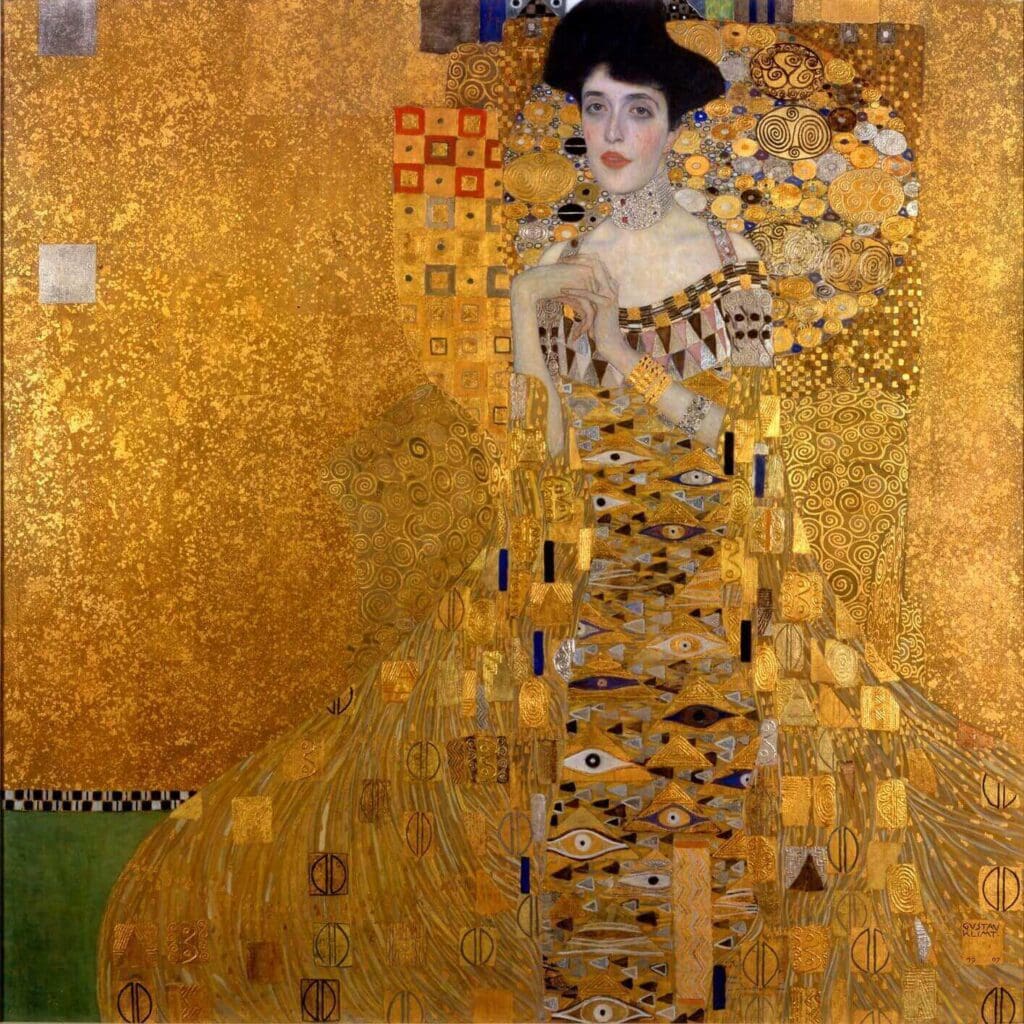
The Portrait of Adele Bloch-Bauer 1 is a portrait of a wealthy Jewish socialite renowned for its use of gold leaf and intricate patterns, which create a mesmerizing effect. The painting was also the subject of a high-profile restitution case, which brought attention to the legacy of Nazi-looted art.
Gustav Klimt “Judith and the Head of Holofernes” (1901)
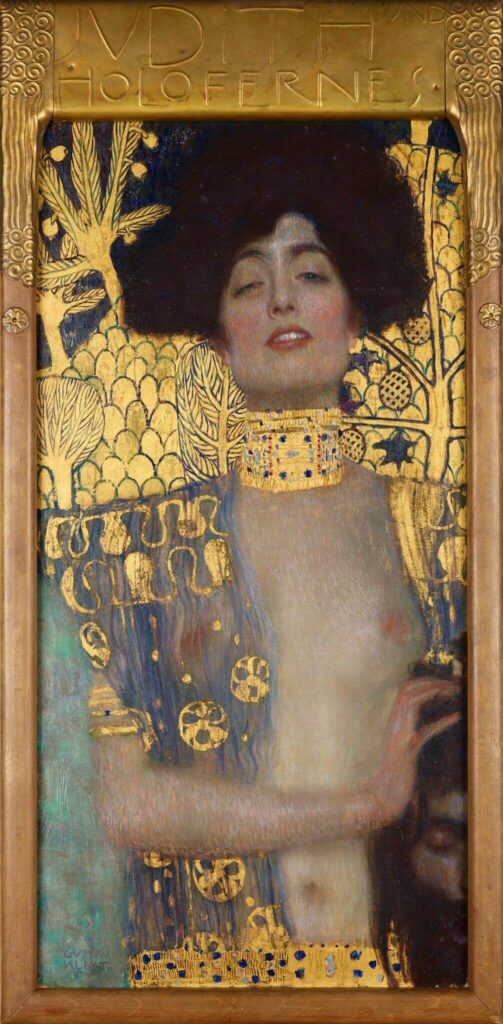
The Judith and the Head of Holofernes painting depicts the biblical story of Judith slaying the Assyrian general Holofernes but with a sensual and erotic twist. It showcases Klimt’s ability to infuse traditional subject matter with his unique style.
Gustav Klimt “Beethoven Frieze” (1902)

The Beethoven Frieze was created for an exhibition in Vienna and featured a series of symbolic figures and motifs inspired by Beethoven’s Ninth Symphony. It represents Klimt’s ability to convey complex ideas through intricate patterns and symbols.
Gustav Klimt “Portrait of Emilie Flöge” (1902)
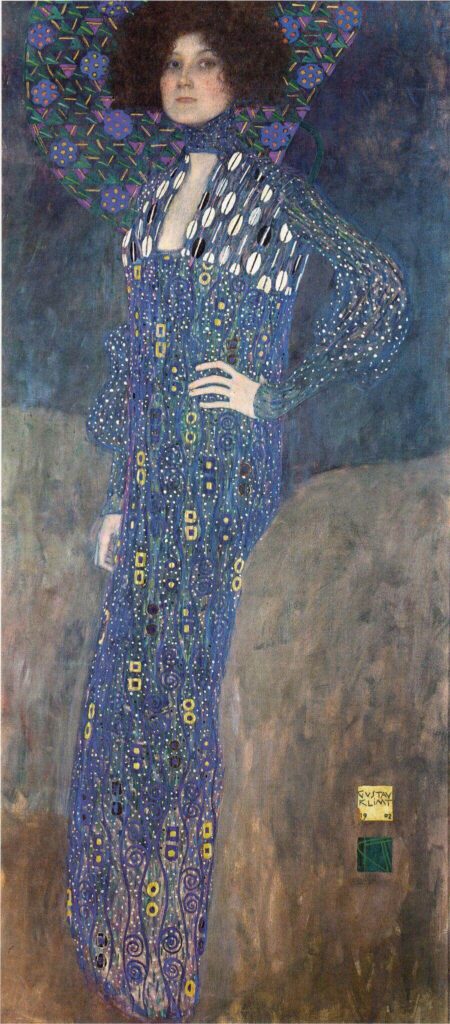
The Portrait of Emilie Flöge is a portrait of Klimt’s long-time companion and muse and is a testament to his skill in capturing the essence of his subject. The painting features Flöge in an elegant dress, surrounded by swirling patterns and symbols.
Gustav Klimt’s “Tree of Life” (1905)
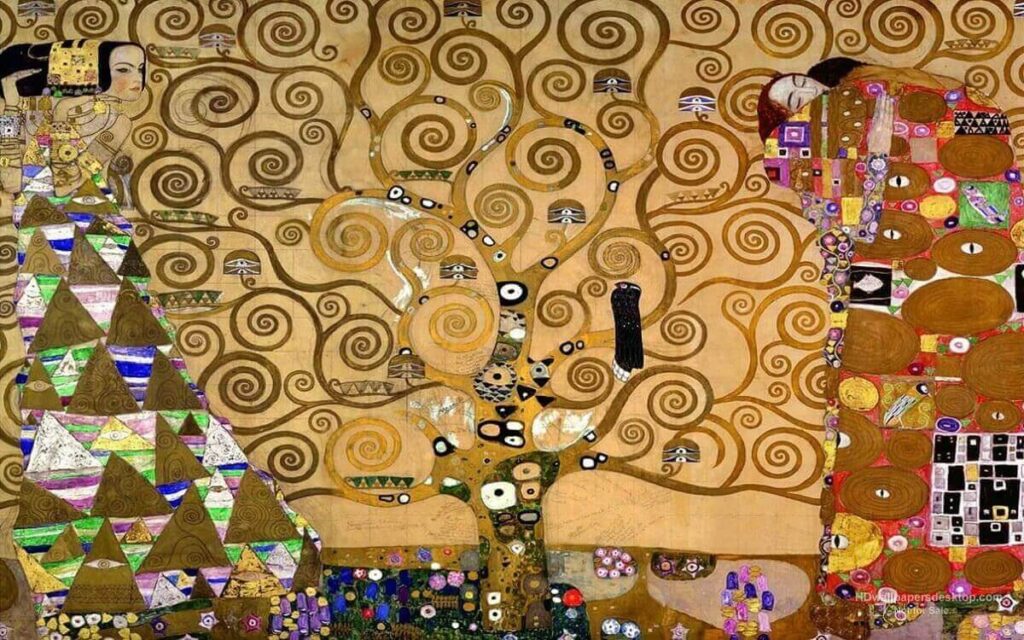
The Tree of Life painting depicts a tree with swirling branches and roots, surrounded by various symbols and motifs. It represents Klimt’s interest in the natural world and his ability to create mesmerizing patterns and textures.
Gustav Klimt’s “The Three Ages of Woman” (1905)
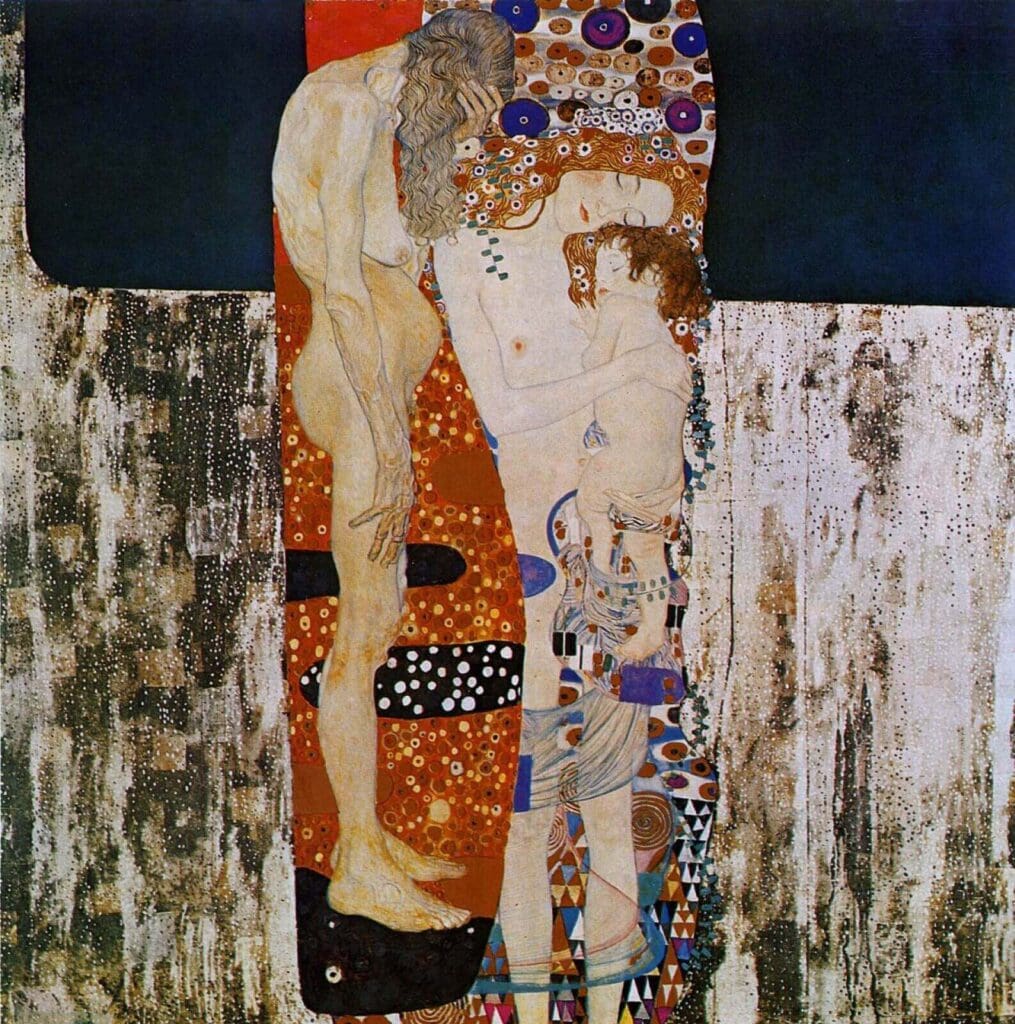
The Three Ages of Woman painting depicts a woman in three different stages of life, surrounded by various symbols and motifs. It showcases Klimt’s ability to capture the passage of time and life cycles through his art.
Gustav Klimt “Water Serpents I” (1904)
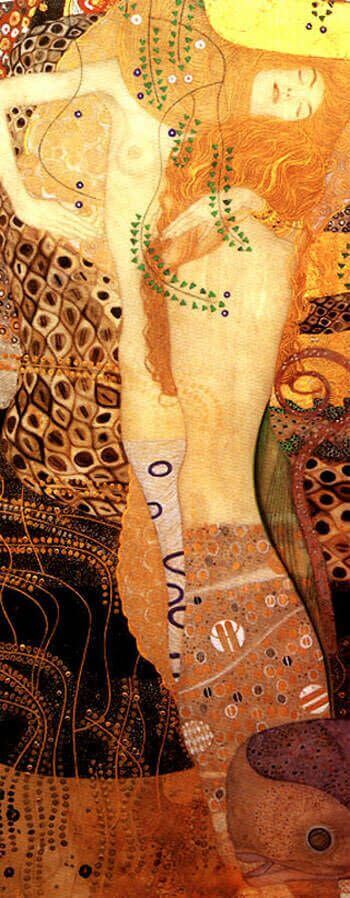
The Water Serpents I painting depicts two women intertwined with a serpent, surrounded by patterns and symbols. It showcases Klimt’s fascination with the female form and his ability to create sensual and erotic works of art.
Gustav Klimt “Danaë” (1907-1908)

The Danaë painting depicts the mythological figure of Danaë, who Zeus seduced in the form of golden rain. It showcases Klimt’s ability to combine classical subject matter with his unique style and symbolism.
Gustav Klimt “Adele Bloch-Bauer II” (1912)
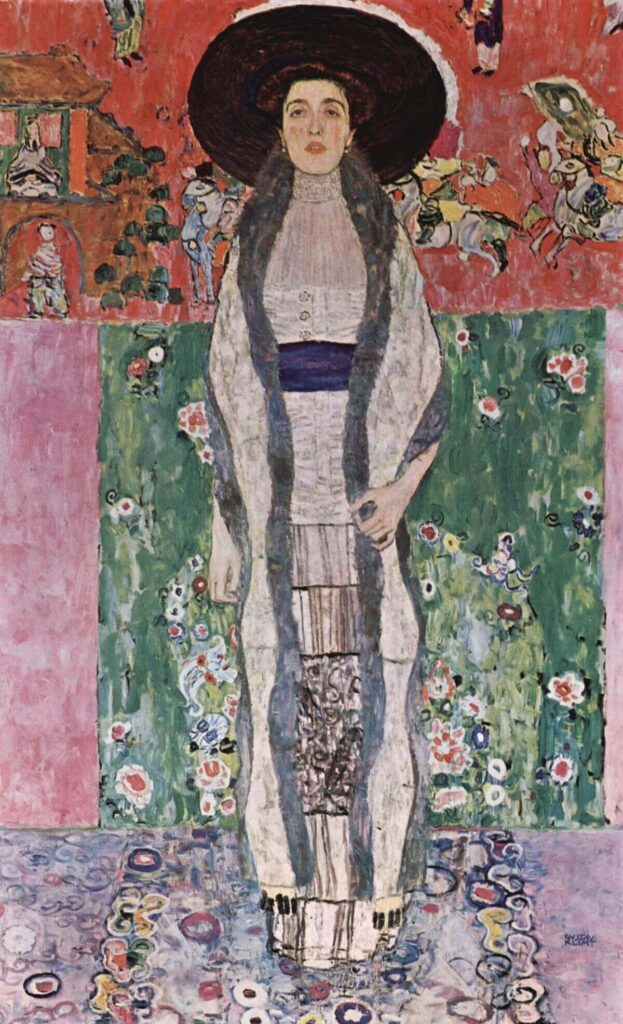
This portrait of Adele Bloch-Bauer was created several years after the first portrait and featured a more abstract and stylized representation of the subject. It showcases Klimt’s ability to evolve and adapt his style while maintaining his signature use of gold leaf and intricate patterns.
These paintings are considered a timeless legacy due to their innovative composition, intricate details, and symbolism. Klimt’s use of gold leaf and patterns created a mesmerizing effect that was unique to his style.
Klimt’s fascination with the female form and his ability to infuse traditional subject matter with his unique style has made his work enduringly popular. Overall, Gustav Klimt’s paintings offer a glimpse into the genius of one of the most influential artists of the modern era. His legacy continues to inspire and captivate audiences today.
Anita Louise Art is dedicated to art education, great artists, and inspiring others to find and create their art. We love art that uplifts and inspires. #ArtToMakeYouSmile! #ArtToMakeYouHappy!
If you want to see any of my art, you can find out more by clicking here. If you are interested in what inspires me and my paintings, you can discover more by clicking here.
We have a free newsletter and would love you to be part of our community; you can subscribe to the newsletter by clicking here. If you have any questions, I would be happy to talk to you. You can reach me, Anita, by clicking here.
Subscribe to our Anita Louise Art YouTube Channel, filled with great videos and information by clicking here.
Join us for our podcast “5 Minutes With Art.” Spend just 5 minutes a week with us to discover and learn about great art and artists. You can find out more about our podcast by clicking here.
Frequently Asked Questions
Who was Gustav Klimt?
Gustav Klimt was an Austrian symbolist painter and one of the most prominent members of the Vienna Secession movement in the late 19th and early 20th centuries.
When was Gustav Klimt born?
Gustav Klimt was born on July 14, 1862, in Baumgarten, Austria.
What is Gustav Klimt known for?
Gustav Klimt is known for his decorative and highly stylized paintings, often characterized by the use of gold leaf, symbolism, and sensual subject matter.
What is the Vienna Secession movement?
The Vienna Secession was a group of artists who sought to break away from traditional academic art and promote modern and innovative approaches to art in Vienna, Austria.
What are some famous paintings by Gustav Klimt?
Some of Gustav Klimt’s famous paintings include “The Kiss,” “Portrait of Adele Bloch-Bauer I,” “The Tree of Life,” and “The Woman in Gold.”
What is the significance of “The Kiss”?
“The Kiss” is one of Klimt’s most renowned works and is regarded as an iconic symbol of love and sensuality in art. It depicts a couple locked in an intimate embrace.
What is the meaning behind Klimt’s use of gold leaf in his paintings?
Klimt’s use of gold leaf was symbolic and represented spiritual or divine aspects. It added a sense of luxury, radiance, and transcendence to his works.
Was Gustav Klimt a controversial artist?
Yes, Klimt’s provocative and sensual subject matter, along with his departure from traditional artistic conventions, often stirred controversy and divided public opinion during his time.
Related Questions
21 Top Renaissance Artists And Their Works of Art
The Renaissance produced many great artists throughout Europe. Many of these artists have continued to inspire artists throughout the centuries. When we speak of top Renaissance artists, we think of the trinity of artists like Leonardo da Vinci, Michelangelo, and Raphael. But besides these three artists, many other influential Renaissance artists remain essential.
By clicking here, you can learn more by reading 21 Top Renaissance Artists And Their Works of Art.
What Is The Importance Of Art From The Renaissance Period?
Renaissance art is essential as it was a time of rebirth and discovery. Artists like Leonardo da Vinci, Michelangelo, and Raphael were at the forefront of that change, creation, and discovery. Renaissance art has influenced art and artists for many centuries and continues to influence artists today.
By clicking here, you can learn more by reading What Is The Importance Of Art From The Renaissance Period?.
Early Renaissance Vs. High Renaissance Art Explained
Early Renaissance and High Renaissance are both periods of the art of the Renaissance era. The entire Renaissance era shared a lot of the same characteristics. The High Renaissance was dominated by three major artists: Leonardo da Vinci, Michelangelo, and Raphael.
By clicking here, you can learn more by reading Early Renaissance Vs. High Renaissance Art Explained.

